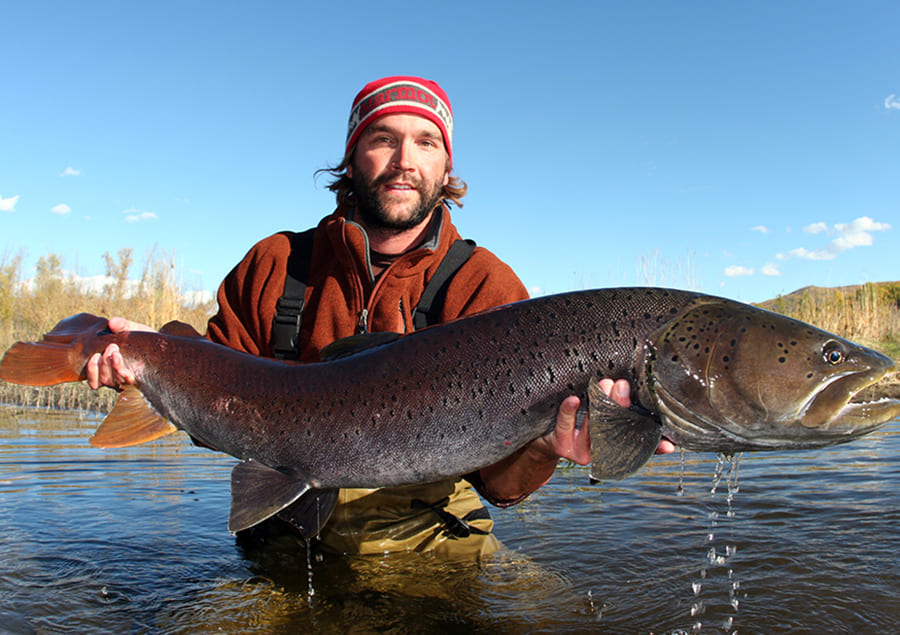Zeb Hogan is looking for big fish – bigger than Tahoe’s 25-pound Makinaws, bigger than the record size 41-pound Lahontan cutthroat trout caught in Pyramid Lake. He’s looking for megafish: six feet long and 200 pounds.
The adventures of this University of Nevada, Reno research professor are being chronicled in a five-part series on the National Geographic Channel, the first of which premieres Tuesday, Oct. 21 at 9 p.m. Hogan goes to the ends of the earth on his quest to locate and help protect the monster fish that are in peril of extinction.
Giant sting-rays in Cambodia and giant Mekong catfish in Thailand are the stars of the show “Monster Fish of the Mekong,” the first installment of the series on the Megafishes Project, which is a study focusing on the enormous freshwater fish. In part of the show, viewers will witness a rare capture of a giant Mekong catfish and watch Hogan persuade local fisherman to release the endangered creature back into the wild.
Hogan’s work, with the University’s Department of Natural Resources and Environmental Science, has taken him to dozens of locations, around the world. About half of all megafish are in Asia, but Hogan's project also includes those in Australia, the Middle East, Europe and North and South America, including the Mekong River in southeastern Asia, the Mississippi River, the Nile in East Africa and the Amazon in South America.
“I am in China now to give a keynote speech at the International Aquarium Congress in Shanghai,” he said. “Hopefully I'll also have a chance to meet and talk with people here about sturgeon and paddlefish research. After China I will be going to Italy for the premiere of the National Geographic television show there, then on to Thailand for research on giant freshwater stingray.”
The giant sting-ray rivals the Mekong catfish in size. The catfish can grow to nearly 13 feet long and almost 660 pounds and can live for 30 years. The catfish never stop growing. Estimates indicate that the total number of these giant catfish has decreased by 90 percent or so during the past two decades. It is just one of the 70 percent of two dozen species of huge freshwater fish that are at risk of extinction. Hogan, a conservation biologist, said the closest to extinction is the Chinese paddlefish, which is found in the Yangtze River in China.
Determining which species are on the brink of extinction is the primary goal of Hogan's three-year study in collaboration with UNR assistant professor Sudeep Chandra. Hogan said dams, pollution and overfishing are the biggest threats to freshwater megafish.
The Megafishes Project is generating a plethora of publicity through the television show and the National Geographic website. Two shows featuring Hogan and megafish have previously aired on the National Geographic Channel. One of those, “Monsters of the Amazon” is scheduled to run at 8 p.m., just before the new show on Tuesday.
“The publicity is good if it highlights some of the valuable work that comes out of the University,” Hogan said. “I am proud to be associated with the university and so obviously I'd like to promote the work done here. I'm also happy if the publicity raises the profile of freshwater biodiversity conservation, since freshwater biodiversity is highly threatened yet the issue does not receive very much attention.”
In addition to the attention garnered through National Geographic, there have been articles in publications such as Science, and cover stories in Bioscience, American Scientist, Conservation Biology, and Global Ecology and Biogeography about the scholarly work that comes out of the Department of Natural Resources and Environmental Science lab at the University.












